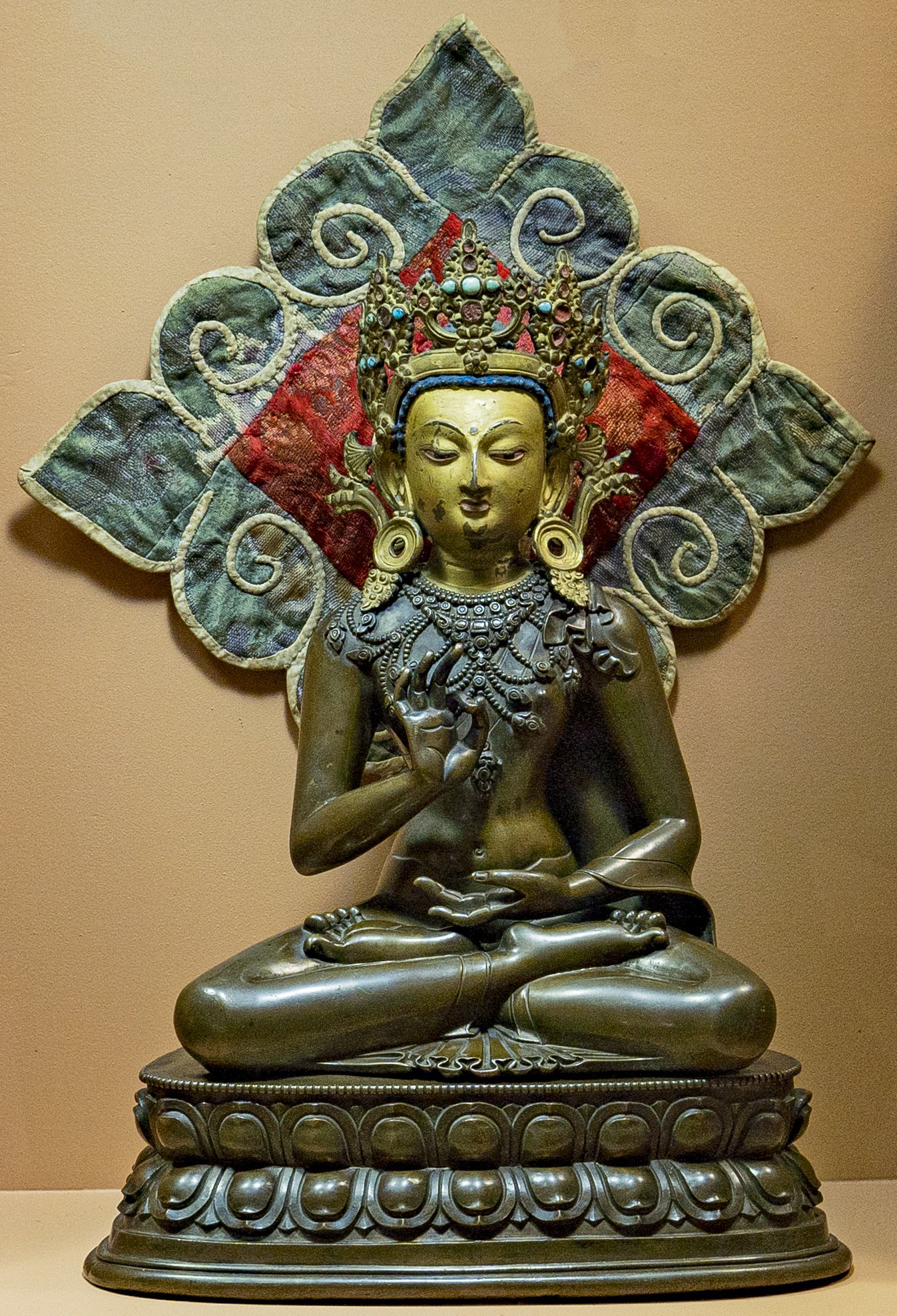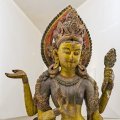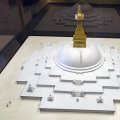Patan Museum (Nepal): photo 130
Photo 130 of 212 in Gallery: Patan Museum (Nepal)

Image title: Amoghasiddhi (the Buddha of Unfailing Success)
Description of the photo
This Copper sculpture shows an image of Amoghasiddhi (the Buddha of Unfailing Success), from the 17th/18th century origination from Tibet.—Materials used: Copper, cold gold, turquoise
Amoghasiddhi, one of the Five Transcendent Buddhas, wears a magnificent turquoise-studded, five-crested crown, large earrings, and a richly bejewelled necklace. Typical of many Tibetan images, this Amoghasiddhi’s face is painted with what is known as “cold gold,” a gold-dust paste applied without benefit of firing. In accordance with Tibetan peaceful manifestations the god’s hair is painted blue. While in worship in some now unknown Tibetan monastery, the deity wore a charming cape (left photograph). The pedestal of this image is packed with tightly wound paper rolls inscribed in Tibetan with Buddhist prayers, mantras, and magic syllables (right photograph). One of the prayer rolls is written on birch bark, which suggests some antiquity. Also included is an apricot pit, some seeds and other sanctified talismans. The most interesting object is the painted, pyramidal wooden post which penetrates the deity's body like the symbolic pillar which transfixes chaityas. Known in Tibetan as sogshing (tree of life) the wooden post is said to be the first ritual object to be introduced into a sculpture at the time of consecration. This is supposed to be obligatory but among known opened sculptures its presence is in fact very rare. On all sides the post is inscribed in gilt Tibetan letters with syllables such as om, hum, ha, hri. There are also thin vertical lines which may be associated with die god’s “subtle body.” In Tantric belief, the subtle body is an imagined network of channels in the real body thtough which individual energy courses to ultimately pervade the cosmos
Gallery information:
The Patan Museum is located on the Durbar square of Patan (Lalitpur/Lalitapura, Kathmandu, Nepal) which is associated Keshav Narayan Chowk (Keshavnarayan)—a form of Lord Vishnu. Being listed as a World Heritage Site, the whole of Durbar square is filled with exquisite temples, sculptures and other ancient structures, of which the ancient history history can be traced to the Malla Kings of Lalitpur. It is an important site for both Buddhism and Hinduism.
Photo details:
Date: 2019-12-02
Camera: SONY ILCE-6400
Exposure: 1/20
Aperture: f/4.5
ISO: 100
Focal length: 18mm
High resolution:
Download file
Size: 1.62 MB
Resolution: 1347 x 1976
© Photograph by Gabe Hiemstra.
License: CC BY-NC-ND 4.0

